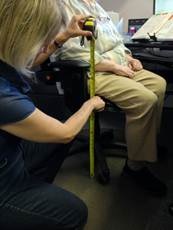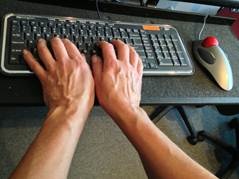I did this for my amusement when confronted yet again by a product (in this case monitor arms) that purports to be “Sit to Stand”.
This is again becoming important as government and some business restrict the use of adjustable tables but still want/need a workable sit-stand option for computer work.
I dug into our database of standard evals which had both recommended sitting and standing measurements (using standard office chairs) and did some number crunching.
Bottom line: while the apparent design target for manufacturers seems to be about 12 to 13” of total range, for our population, the AVERAGE needed range is closer to 14”. Further, even at 14” range, the standard deviation is large enough so that more than 30% need a range of 15” or more.
A reasonable design target would be about 16” of range, provided that 16”of overall range can be adjusted to match the needed absolute heights of the end user. In other words: 16” of range would be OK only if the very bottom setting is a good setting for seated work for a specific user. Our 7500 arms (our more expensive option) is capable of a 16” range, but have limited absolute height adjustment using 6” extensions. The new Concerto arms and most other pole mount arms seem to have only 12 to 13” ranges, but can adjust the absolute heights to better match the user.
In the case of monitor arms, a pole mounted arm with a “dynamic range” of 16 inches, and “fixed” height adjustment on the pole to set the range to match the user would be our Holy Grail. I have yet to see such a beastie on the market at any reasonable cost.
While one might decide to compromise a little on gaze angle to facilitate the ability to work standing for brief periods, we haven’t even begun on the limitations of sit/stand keyboard supports.
Like monitors, their adjustment range tends to be about 10 to 12”. As this usually includes a few inches under the worksurface, they almost never go high enough to use while standing without creating a significant amount of wrist extension. Doing anything longer than a very brief input task is posturally problematic. The rare exceptions include very short workers, or when sit/stand arms are used in conjunction with a workstation configured for use with saddle seating (a posture half way between traditional sitting and standing).
There are now some new combo devices that attempt to solve this problem. However, in their efforts to keep costs down, they inevitably compromise on keyboard tray slope adjustment and/or focal range and/or space for placement of all those reference materials that are still used despite many workplaces going “paperless”.
The solution that gets the best results for the best value is still the user adjustable worksurface: ideally a table that has a footprint large enough to cover the entire functional workspace needed to do the tasks required.



